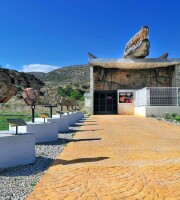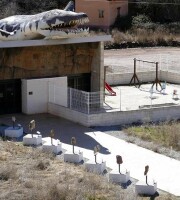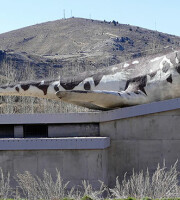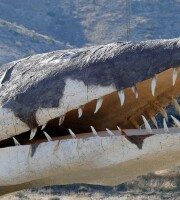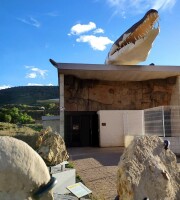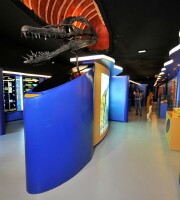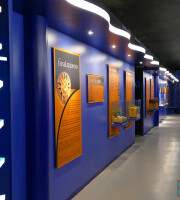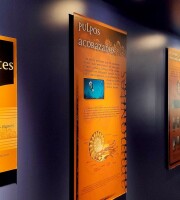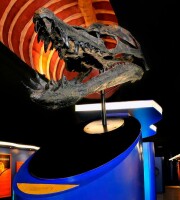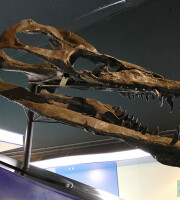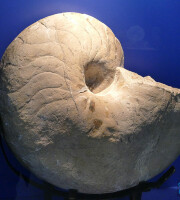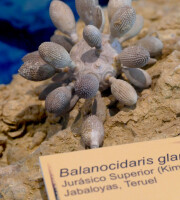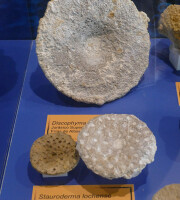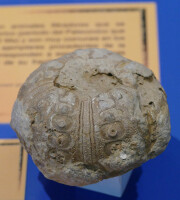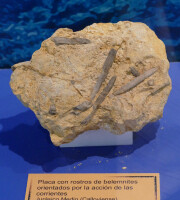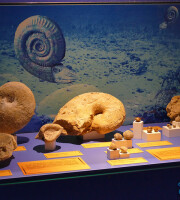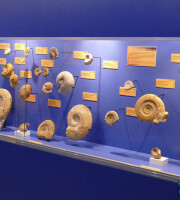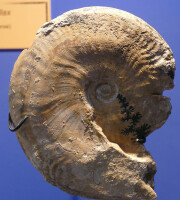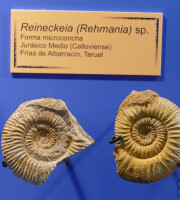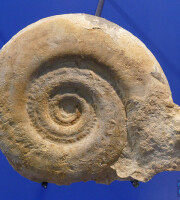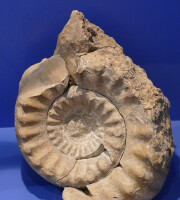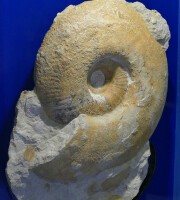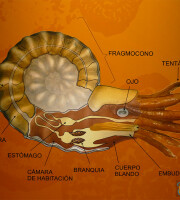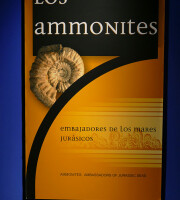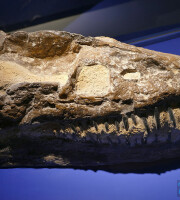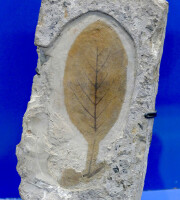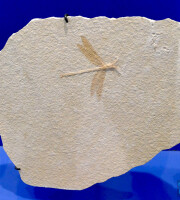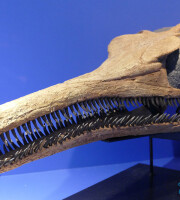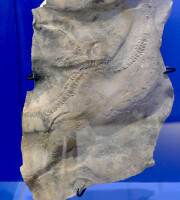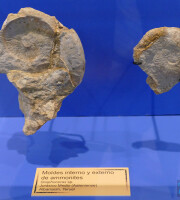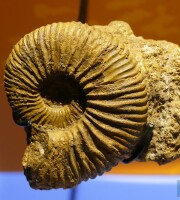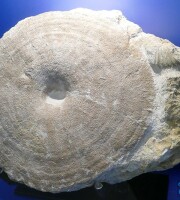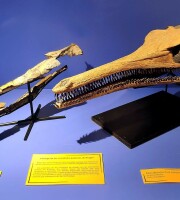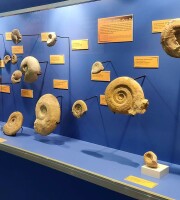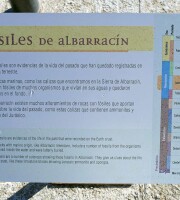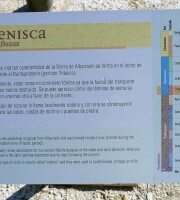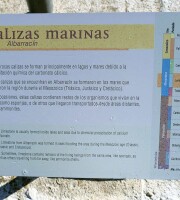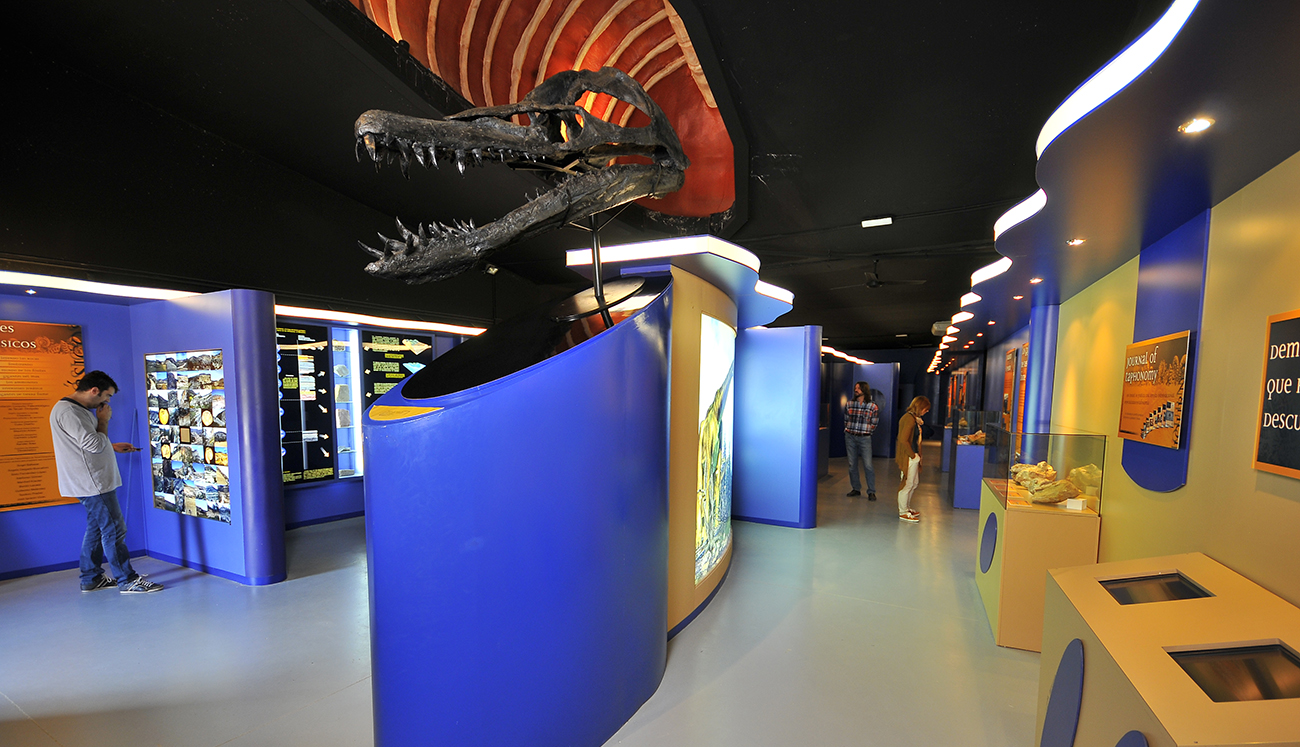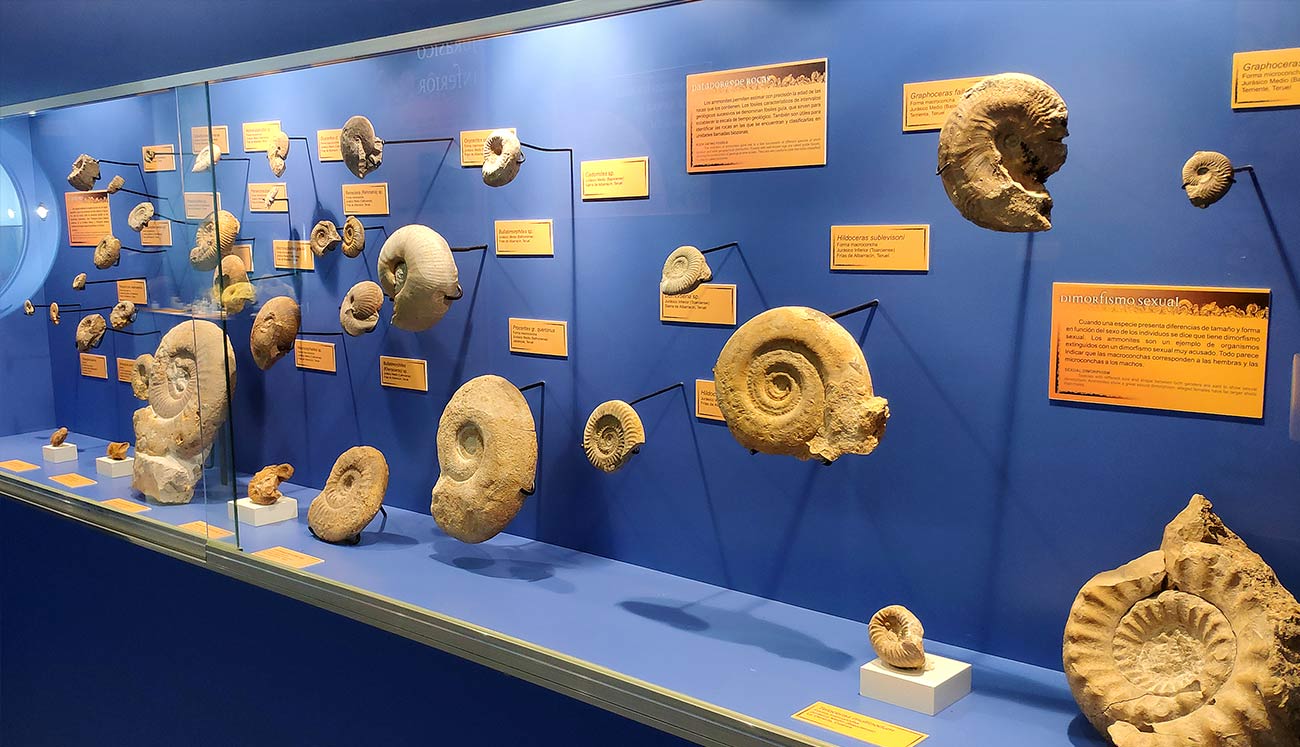Mar Nummus Dinópolis
One hundred fifty million years ago, the Sierra de Albarracín was covered by the Tethys Sea, the forerunner of today’s Mediterranean. In this centre you can see a varied sample of fossils from the beings that lived in this immense sea: crocodiles, sponges, ammonites, etc. You will also learn about the process to form a fossils, the tools used by palaeontologists to study what life was like millions of years ago. And you’ll also see a sample of the biggest predator known, the impressive Liopleurodon, a gigantic reptile that lived in the Jurassic seas.
The satellite Dinopolis in Albarracín was inaugurated on 1 July 2008 and it is part of a Teruel-organised tour entitled Dinopolis-Jurassic Route, which addresses the extraordinary diversity of Jurassic invertebrate marine fossils found in these areas. Typical evidence of the presence of the sea in this region is found in the calcareous rocks that border the Guadalaviar River and the roads that accompany it. In particular, they contain abundant fossils of echinoderms, brachiopods, bivalvia, gastropods, sponges; and ammonites are particularly relevant. They include the singular denomination of origin Albarracinites albarraciniensis. All of them correspond to fossils from shallow marine environments. In any case, it should be noted that these marine invertebrate fossils are very common throughout the Albarracín highlands.
Although most of the fossils recorded in this Sierra are marine invertebrates, some vertebrate remains – both marine and continental – have also been found. They include several types of fish; as well as part of the skull of a saltwater crocodile found in Griegos and other marine reptiles in Royuela. In fact, the reconstruction of a large predatory sea reptile – Liopleurodon – presides over the exterior image of the building or Albarracín branch. Among the continental vertebrates – which, while uncommon, have also been found – dinosaur remains have been identified in Jabaloyas, Rubiales and Veguillas de la Sierra.
Finally, the Albarracín satellite presents in a brief and educational way the peculiarities of the fossilisation processes; and, in particular, some keys to how the shells of marine invertebrates from more than 150 million years ago resulted in fossils. Centuries ago, these fossils were considered to be nature’s whims or figurative stones and were not associated with the remains of organisms or their activity. Lastly, concepts and principles of taphonomy (or burial laws) are explained; that is, the methodological system that decrypts how fossils and palaeontological deposits are formed and how they are modified over time.
